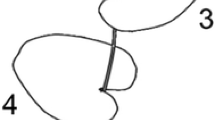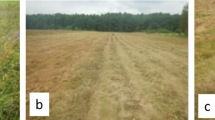Abstract
Zerynthia cassandra is a butterfly endemic to the Italian peninsula. It was recently recognized as a sister species of Zerynthia polyxena. Z. cassandra is oligophagous as it feeds on a very restricted number of toxic plants belonging to the genus Aristolochia: Aristolochia pallida and A. rotunda. The paper reports the results of a research on the ecology of this species which was studied in the natural reserve "Stagni di Lungavilla" (Northern Italy) where the butterfly was living in a small patch of grassy vegetation bordered by a ditch at the margins of a pond. Z. cassandra develops one generation a year. Oviposition occurred in April. Eggs were mainly laid on the lower side of A. rotunda blades. The height of eggs from the ground depended on climatic trends, which affected the host plant phenology. Eggs mortality was mainly due to consumption of leaves by snails (Cepaea nemoralis) and slugs (Arion sp.). Larvae completed their development from April to May, while chrysalises were the aestivating and overwintering stage. Females did not lay eggs on host plants when they were part of the undergrowth. A decline of the butterfly due to habitat changes was recorded during the research (2001–2005). According to information coming from local butterfly watchers the butterfly used to be quite common in the natural reserve until 70’s. Its decline was caused by agricultural intensification and the natural evolution of vegetation towards woodlands, which gradually reduced the host plant density, so making the habitat unsuitable and causing the local extinction of the butterfly.



Similar content being viewed by others
References
Altini E, Tarasco E (2011) Struttura di comunità di lepidotteri ropaloceri in diversi habitat della Riserva Naturale Regionale Orientata “Laghi di Conversano e Gravina di Monsignore” (Bari). Atti XXIII Cong Naz Ital Entomol XXIII, Genova, p 74
Altini E, Tarasco E, Gallo M, Triggiani O (2007) I lepidotteri diurni della Riserva naturale regionale orientata dei “Laghi di Conversano e Gravina di Monsignore” e note di biologia di Zerynthia polyxena (Lepidoptera, Papilionidae). Atti XXI Cong Naz Ital Entomol, Campobasso
Batáry P, Örvössy N, Körösi A, Peregovits L (2008) Egg distribution of the southern festoon (Zerynthia polyxena) (Lepidoptera, Papilionidae). Acta Zool Acad Sci Hung 54:401–410
Baumann E (1981) Erfolgreiche Wiedereinbürgerung von Zerynthia polyxena auf einem ehemaligen Weinberg am Stadtrand von Graz. Beihefte zu den Veröffentlichungen für Naturschutz und Landschaftspflege in Baden-Württemberg. 21: 177–179
Beer S (1946) Ricerche sulla biologia di Zerynthia hypsipyle Schulze (Lepidoptera Papilionidae). Mem Soc Entomol It 25:34–73
Boireau P, Braconnot S (1995) Régression de Zerynthia polyxena dans le département des Alpes-Maritimes (Lepidoptera, Papilionidae). Riviera Sci 7–14
Carrier J (1987) Quelques considérations sur un biotope a Zerynthia polyxena (Schiffermuller & Denis. 1775) en zone littorale languedocienne (Lepidoptera Papilionidae). Bull Soc Sci Nat 53:1–12
Čelik T (2012) Adult demography, spatial distribution and movements of Zerynthia polyxena (Lepidoptera: Papilionidae) in a dense network of permanent habitats. Eur J Entomol 109:217–227. https://doi.org/10.14411/eje.2012.028
Dapporto L (2010) Speciation in Mediterranean refugia and postglacial expansion of Zerynthia polyxena (Lepidoptera, Papilionidae). J Zool Syst Evol Res 48:229–237
Hanski I (1993) Metapopulation ecology. Oxford University Press, Oxford
Jordano D, Gomariz G (1994) Variation in phenology and nutritional quality between host plants and its effect on larval performance in a specialist butterfly, Zerynthia rumina. Entomol Exp Appl 71:271–277. https://doi.org/10.1111/j.1570-7458.1994.tb01794.x
Kudrna O, Harpke A, Lux K et al (2011) Distribution Atlas of butterflies in the Europe. Gesellschaft für Schmetterlingschutz, Halle
Lux C (1990) Ethologie, systématique and écologie de Zerynthia polyxena creusa Meigen dans les Alpes-Maritimes (Formes, variétés et aberrations du Papilionidae). Bull Soc Sci Nat 66:9–17
Maes D, Vanreusel W, Talloen W, Van Dyck H (2004) Functional conservation units for the endangered Alcon Blue butterfly Maculinea alcon in Belgium (Lepidoptera: Lycaenidae). Biol Conserv 120:229–241. https://doi.org/10.1016/j.biocon.2004.02.018
Minerbi T (2006) Osservazioni sulla biologia di Zerynthia polyxena (Denis e Schiffermüller) in ambienti planiziali padani. Dissertation. Università di Pavia
Nardi E (1984) The genus “Aristolochia” L. (Aristolochiaceae) in Italy. Webbia 38:221–300
Örvössy N, Kőrösi Á, Batary P, Vozar A, Peregovits L (2014) Habitat requirements of the protected southern festoon (Zerynthia polyxena); adult, egg and larval distribution in a highly degraded habitat complex. Acta Zool Acad Sci Hung 60:371–387
Pinto CF, Urzùa A, Niemeyer HM (2011) Sequestration of aristolochic acids from meridic diets by larvae of Battus polydamas archidamas (Papilionidae: Troidini). Eur J Entomol 108:41–45. https://doi.org/10.14411/eje.2011.005
Rothschild M, Von Euw J, Reichstein T (1972) Aristolochic acids stored by Zerynthia polyxena (Lepidoptera). Insect Biochem 2:334–343. https://doi.org/10.1016/0020-1790(72)90038-8
Slancarova J, Vrba P, Platek M, Zapletal M, Spitzer L, Konvicka M (2015) Co-occurrence of three Aristolochia-feeding Papilionids (Archon apollinus, Zerynthia polyxena and Zerynthia cerisy) in Greek Thrace. J Nat Hist 49:1825–1848
Thomas CD, Thomas JA, Warren MS (1992) Distributions of occupied and vacant butterfly habitats in fragmented landscapes. Oecologia 92:563–567. https://doi.org/10.1007/BF00317850
Trattnig U, Gepp J (1992) Extinction-history of a population of Zerynthia polyxena in a vineyard in Styria (Austria). The problem of cessation of extensive cultivation. In: Van Beek TR, Ovaa AH, Van der Made JG (eds) Future of butterflies in Europe. Proceedings of the International congress of the future of butterflies in Europe, Wageningen, 167–171
Vovlas A, Balletto E, Altini E, Clemente D, Bonelli S (2014) Mobility and oviposition site-selection in Zerynthia cassandra (Lepidoptera, Papilionidae): implications for its conservation. J Insect Conserv 18:587–597. https://doi.org/10.1007/s10841-014-9662-4
Zinetti F, Dapporto L, Vovlas A, Chelazzi G, Bonelli S, Balletto E, Ciofi C (2013) When the rule becomes the exception. No evidence of gene flow between two Zerynthia cryptic butterflies suggests the emergence of a new model group. PLoS ONE 8:e65746. https://doi.org/10.1371/journal.pone.0065746
Author information
Authors and Affiliations
Corresponding author
Ethics declarations
Conflict of interest
The authors of the manuscript declare that they have no conflict of interest.
Rights and permissions
About this article
Cite this article
Camerini, G., Groppali, R. & Minerbi, T. Observations on the ecology of the endangered butterfly Zerynthia cassandra in a protected area of Northern Italy. J Insect Conserv 22, 41–49 (2018). https://doi.org/10.1007/s10841-017-0036-6
Received:
Accepted:
Published:
Issue Date:
DOI: https://doi.org/10.1007/s10841-017-0036-6




